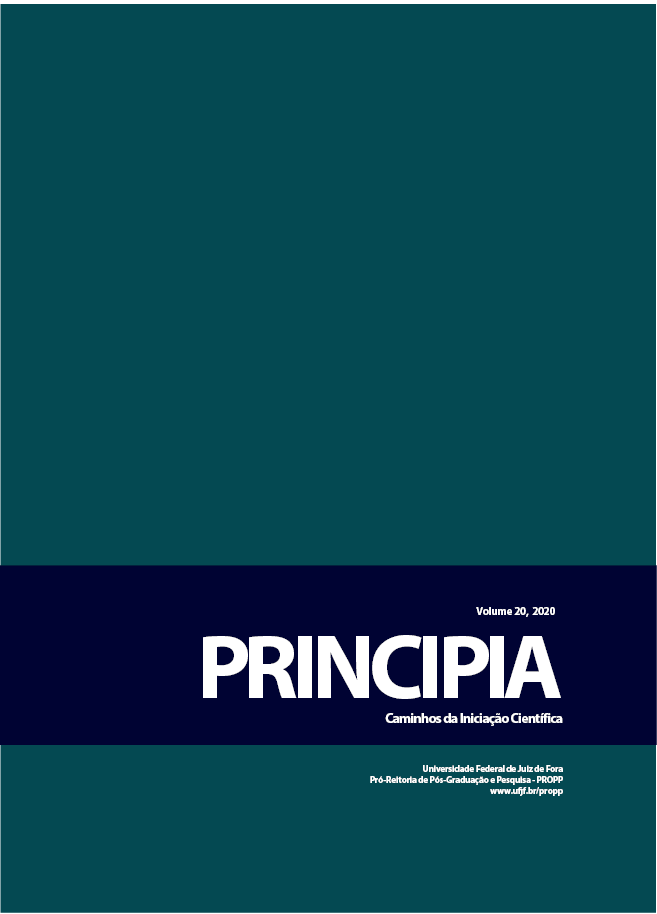Paisagem Sonora em Juiz de Fora
O som da cidade como resgate da cultura e da memória urbana
DOI:
https://doi.org/10.34019/2179-3700.2020.v20.31134Palavras-chave:
Paisagem Sonora;Juiz de Fora;Cultura;Memória UrbanaResumo
O som, seja pela sua presença ou pela sua ausência, influência e altera a percepção que se tem de um espaço, sendo um qualificador deste espaço e contribuindo para transformá-lo ou não em um lugar. Ainda que exista um domínio da visão sob os demais sentidos, os sons, os odores e as sensações térmicas, mesmo que efêmeros e dinâmicos, não podem ser desconsiderados, haja vista que são responsáveis pela construção das ambiências e consequente construção sensível dos espaços. A Paisagem Sonora ("soundscape"), propõe o estudo do ambiente acústico de maneira sistematizada e contextualizada. Uma paisagem sonora é a extensão do território que se pode escutar, abrangendo todos os sons produzidos no ambiente, sendo também sempre uma criação cultural. O presente projeto de pesquisa propõe um estudo da Paisagem Sonora de Juiz de Fora, mais especificadamente da região do centro urbano da cidade, compreendida no recorte deste estudo como o “Triângulo Central”, espaço que detém parte significativa da história da cidade, apresentando diversos usos e formatações ao longo do tempo. O Triângulo Central representa uma parcela do território urbano dos mais importantes como portador de memória, tratando-se de um dos lugares mais pertinentes para a compreensão do desenvolvimento de Juiz de Fora. Foi proposto também um recorte temporal, datado entre as décadas de 1880 e 1940. Este recorte espacial-temporal justifica-se pela própria relevância histórico-cultural que apresenta para Juiz de Fora. Porém, tendo em vista a densidade dos resultados obtidos até o momento, abordoe-se a primeira década deste recorte, compreendida de 1880 a 1890. O objetivo geral desta pesquisa é resgatar parte da memória sonora da cidade de Juiz de Fora, categorizando os sons destacados como relevantes (histórica e/ou culturalmente) e identificando a transformação da paisagem sonora em meio às transformações dos espaços urbanos. Configura-se como tendo uma abordagem qualitativa, pois não se baseia na representatividade numérica, isto é, os dados são considerados na análise de acordo com qualidade do material coletado, sendo considerados os registros sonoros mais destacadamente relevantes para a pesquisa. Assim, ainda que sejam apresentados dados numéricos neste estudo, estes têm relevância como respaldo à análise qualitativa. Caracteriza-se como uma pesquisa documental, uma vez que trabalha com fontes primárias (jornais) que ainda não receberam um tratamento analítico com o enfoque desta pesquisa. A partir da pesquisa proposta e seus desdobramentos, gerou-se um mapa gráfico-sonoro, com indicativo de sons coletados em cada área, servindo como registro histórico-cultural das percepções sonoras no centro de Juiz de Fora, criando-se um registro da paisagem sonora em tal espaço-tempo.
Downloads
Referências
CHION, M. Audio-Vision: sound on screen. New York: Columbia University Press, 1994.
GENOVEZ, P. F. Núcleo Histórico da Rua Espírito Santo. Coleção História e Arquitetura de Juiz de Fora, CLIO EDIÇÕES ELETRÔNICAS, 1998.
GIL, A. C. Como elaborar projetos de pesquisa. 4. ed. São Paulo: Atlas, 2002.
IBGE – Instituto Brasileiro de Geografia e Estatístic (2020, 17 de janeiro). Brasil, MG, Juiz de Fora. Disponível em: <https://cidades.ibge.gov.br/brasil/mg/juiz-de-fora/>
JANATA P. The Neural Architecture of Music-Evoked Autobiographical Memories. Cerebral Cortex, California, v. 20, n. 11, p. 2579 - 2594, 2009.
MERLEAU-PONTY M. Fenomenologia da Percepção. 2ª ed. São Paulo: Livraria Martins Fontes Editora Ltda, 1999.
MINAYO, M. C. S. (org.) Pesquisa Social. Teoria, método e criatividade. 18. ed. Petrópolis: Vozes, 2001.
MUSSE, C. F. A imprensa e a memória do lugar: Juiz de Fora (1870/1940). In: XII Congresso Brasileiro de Ciências da Comunicação da Região Sudeste, Juiz de Fora. (2007). Disponível em <http://intercom.org.br/papers/regionais/sudeste2007/resumos/R0083-1.pdf> Acessado em: 22 mai. 2019
Oliveira, A. A imprensa em Juiz de Fora. Juiz de Fora: datilog.. Palestra apresentada no Museu Nacional de Belas Artes-RJ (1978).
OLIVEIRA, J. S. de. Paisagem sonora além da audição: Representações sonoras urbanas das pessoas surdas. Tese (Doutorado em Arquitetura) - PROARQ - Universidade Federal do Rio de Janeiro. Rio de Janeiro: UFRJ/ FAU, 2017.
PASSAGLIA, L. A. P. A preservação do Patrimônio Histórico de Juiz de Fora. IPPLAN/Prefeitura de Juiz de Fora, 1983.
REGO, A. Q. Paisagens sonoras e identidades urbanas: os sons nas crônicas cariocas e as transformações do bairro de Copacabana (1905-1968). 298 f. Tese (Doutorado em Urbanismo) - PROURB - Universidade Federal do Rio de Janeiro. Rio de Janeiro - RJ. 2006.
ROCHA, C. M. H. Escutando a cidade: cartografia de sonoridades. Tese (Doutorado em Arquitetura). Rio de Janeiro: UFRJ/COPPE, 2017.
SCHAFER, R. M. A afinação do mundo. São Paulo: Editora da UNESP, 2001.
SCHAFER, R. M. O ouvido pensante. São Paulo: Editora da UNESP, 1991.
TORRES M. A. e KOZEL S. Paisagens Sonoras: Possíveis Caminhos aos Estudos Culturais em Geografia. Revista Ra’e Ga – O Espaço Geográfico em Análise. Curitiba, n. 20, p. 123- 132, 2010.
TUAN, Y. F. Topofilia: um estudo da percepção, atitudes e valores do meio ambiente. São Paulo: DIFEL, 1980.
VALE, V. A. A arquitetura latino-americana da industrialização Juiz de Fora (1880-1930). Disponível em <http://www.ufjf.br/locus/files/2010/01/5.pdf> Acessado em: 02 set. 2014.
ZUMTHOR P. Atmosferas. 1º ed. Barcelona: Editora Gustavo Gili, SL, 2006.
Downloads
Publicado
Como Citar
Edição
Seção
Licença
Autores que publicam nesta revista concordam com os seguintes termos:
- Autores mantém os direitos autorais e concedem à revista o direito de primeira publicação, com o trabalho simultaneamente licenciado sob a Licença Creative Commons Attribution que permite o compartilhamento do trabalho com reconhecimento da autoria e publicação inicial nesta revista.



